Abrasion
Tooth abrasion is a progressive, pathological loss of tooth substances due to mechanical forces. Any tooth can be affected by most commonly are the canines and premolars. Unfortunately, it is a condition that can happen at any age, but it increases at the elderly age. The reason behind it is that the tooth substances suffer from wear. It all starts in the enamel, but it can progress into the dentin, and in some cases even affect the pulp. Males have a higher prevalence to suffer from abrasion than women. Canines and premolars are the two teeth groups that usually suffer from this condition because of their location. Right-handed people suffer from abrasion more often on the left side, while left-handed people are more affected on the right side.
Symptoms:
The surfaces are usually located near the gum line, are shiny and V-shaped. The most common symptom is tooth sensitivity. It mostly depends on the level of abrasion. In the beginning, patients are not able to really notice what’s happening to their teeth, but at one point the defects are more than visible. The substance loss can be really progressive and even reach the pulp. Once it does, the symptoms become worse. They include pain, and that is when treatment is really necessary. Hot and cold will really cause sensitivity and an unpleasant feeling. With the progression of the condition, patients might also suffer from periodontal disease and dental caries. Abrasion is often associated with gum recession, especially when it’s caused by using a hard-bristled brush or an aggressive brushing technique.
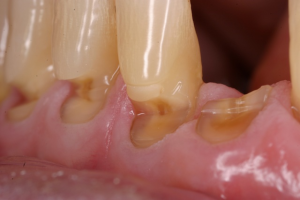
Causes:
The reasons can be divided into several groups including habitual, toothbrush, appliances, and ritual. The main causes include improper brushing techniques and using too much force while brushing, nail-biting, using toothbrushes with hard bristles, abrasive toothpaste, toothpicks, tongue jewelry and more. Among the most common reasons, you will encounter the inappropriate brushing technique. A lot of patients are not aware that they shouldn’t use brushes with hard bristles and use excessive force while they brush their teeth. Another common factor is removable appliances. It can be both orthodontic appliances for any age, or removable dentures, usually worn by the elderly.
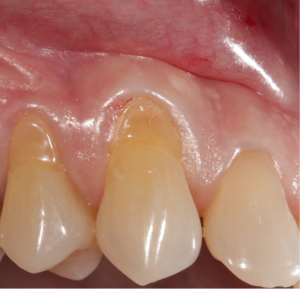
Treatment:
The most important thing about this condition is to remove all the factors that can cause abrasion. With different people there is a different reason. The treatment includes removing the factor that causes the loss of substances and properly taking care of the lesions. Once that is done, the further steps include eliminating all the foods and drinks that can make the condition worse. For example, patients have to avoid bubbly drinks, lemons, limes, oranges. When it comes to oral hygiene they have to use super-soft brushes and toothpastes for sensitive teeth. Fluoride toothpastes, and other fluoride products are very useful in protecting your teeth. Once you visit the dentist, they will be able to tell you more about the treatment that is recommended for your individual case. Patients are often concerned about aesthetic part of the condition. Some teeth will require simple cosmetic procedures, while others might need to be treated with crowns or bridges.
Apicoectomy
Endodontic surgical procedure, where endodontists remove the inflamed periapical tissue and bone and the tip of the root. If the inflamed dental pulp is not treated on time, the infection can spread to the periapical tissues. It is also known as root end treatment, root end surgery and root-end filling. This is a very common procedure in dentistry. If the dental caries is not treated on time it progresses and it affects the dental pulp. Once it reaches there it has to be treated by a dentist. That infection is a really big problem, and it will soon result in a number of symptoms. In other words, the apicoectomy includes the resection of the root tip and the surrounding tissue. There is a special field in dentistry called microsurgical endodontics, that uses a microscope to perform the whole procedure.
Causes:
The most common cause is dental caries. If a root canal treatment is not successful at first, the apicoectomy might be a good way to go. Most dentists do a re-treatment of the root canal and if that is not successful also, then the last option is apicoectomy. Other factors include broken or chipped teeth, teeth with abnormal shapes of the roots, cysts on the roots tips, secondary canals and more.
Symptoms:
The patient might or might not be having any symptoms. If the infection surrounding the tip of the tooth is acute and active, the patient will feel severe pain and might even have a significant swelling. Other symptoms include sensitivity to hot and cold foods and drinks, sensitivity on touch or pressure and more.

Treatment:
It all depends on the individual case. For some patients, an apicoectomy is the perfect surgical treatment options, while for others the best option is extraction. Once you visit the dentist they will be able to let you know more about the best way to go for your personal case. If the apicoectomy is successful, you will be able to keep the tooth in your mouth, without the need of extraction. Before the procedure, your dentist will do an x-ray, and give you anesthesia. The treatment starts with a cut, either on the palate or the vestibular part of the mouth in the region of the tooth’s tip. That is when the dentist uses rotary instruments to resect the tip, and remove the surrounding inflamed tissue. Once they’re done with that, they have to close the tip with a good dental material to prevent leakage from the surrounding tissue to the root canals. The material, of course, has to be biocompatible. If the tooth is extracted, the treatment continues with an appropriate restoration that will replace the missing tooth. The procedure usually takes from 45 minutes up to one hour. In the following month, the bone will continue with recovery and regeneration. During the procedure, patients don’t feel any pain, since they are under anesthesia. After that, they might experience some discomfort of mild pain. They will be prescribed with anesthetics for that. The success rates are very high, especially if the procedure is done properly.
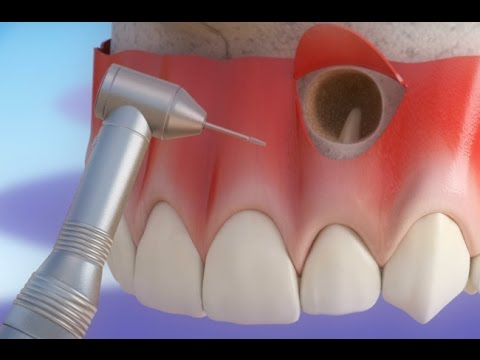
Avulsion
Avulsion is a traumatic injury where the tooth is completely thrown out of its alveolar socket. This injury requires an urgent treatment that includes immediate replantation if possible. The tooth has to be transported in an appropriate medium such as milk, saliva, physiologic saline, water or special transporting kits. Deciduous teeth should not be replanted, because of the possible damage to the germ of the permanent tooth. It usually happens to kids, but it can occur at any age.
Causes:
The most common reason for avulsion is a traumatic injury. Since kids are very active, they tend to trip and fall, which can be the direct factor for avulsion. Other causes are always related to physical and mechanical force. So whether it’s a fall or a hit, a direct contact with a hard surface is usually the way that avulsion occurs. Car crashes, accidents, football, basketball, hockey, are some of the very common activities that can lead to avulsion.
Symptoms:
When it comes to symptoms, there will be a lot of blood, so the others around the patient might not be able to see an empty socket. You can definitely notice that there is something missing in the place of the avulsed tooth. Pain is present and the strength may vary depending on other injuries. Since we’re talking about a traumatic injury, teeth avulsion can be accompanied by a number of other fractures, incisions, bruises, swelling and more.
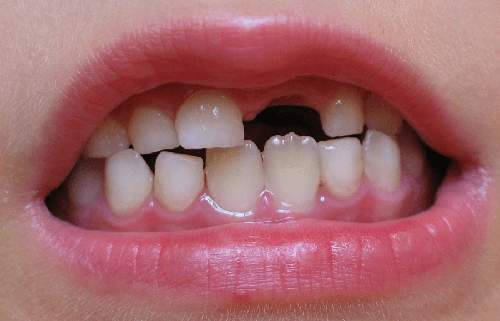
Treatment:
The treatment depends on the age. It is very important to know the age of the patient since it affects the growth of the tooth. The main factor for this condition is whether the apex of the root is still developing or it is already closed. It can occur to deciduous teeth and to permanent ones. The permanent always calls for immediate treatment, this is an urgent condition. When it comes to the handling of permanent teeth, they have to be carried in a moist environment. There are special systems that can be used, but since most people don’t own them, they can use milk water, or place the tooth under the tongue on the way to the dentist. A tooth should be replanted as soon as possible. All the studies show that the replantation is successful if done within the one-hour period after the injury. After that, the success rates only decline. Deciduous teeth are not replanted, because they can harm the germ of the permanent tooth. Once the tooth is avulsed, the periodontal ligament that surrounds it is torn. The main thing that dentists want to achieve is to keep those periodontal cells vital and get a reattachment. The prognosis is always different and completely depends on the case. The factors that have an impact are the age of the patient, how the tooth was transported, whether it fell on a clean surface or not, the time spent between the injury and the treatment. Teeth with completely matured roots and apexes have a better prognosis, compared to the ones that are not fully developed.
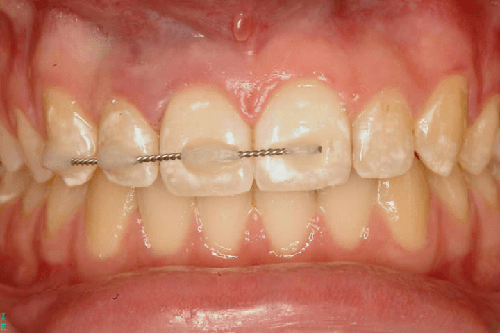
Bleaching
Also known as teeth whitening, a cosmetic procedure to restore the teeth’s natural color, or to whiten the natural shade. The procedure can be done at the doctor’s office, or at home. The first option provides the best and safest results. The at home method includes using different whitening toothpaste, gels, rinses, strips and special whitening systems.
Reasons:
Teeth whitening is one of the most commonly used cosmetic procedures. These days everyone wants to have a perfect smile. That is why people decide to have their teeth bleached. The reasons behind a darker tooth color are numerous. The factors are called discolorations and can be extrinsic and intrinsic. Some people simply are born with a yellowish, brownish, or greyish tone to their teeth color. But with time and age, even the whitest teeth can go through some changes.
Intrinsic factors:
These are internal reasons that cause tooth discoloration. Some are even connected with defects and conditions of the teeth, that is present from the birth of the patient. They include dental trauma (the blood and dental necrosis due to trauma can cause discolorations), dentinogenesis imperfecta, amelogenesis imperfecta, enamel hypoplasia, antibiotics such as tetracycline, caries, fluorosis and more.
Extrinsic factors:
These are external factors that we can get in touch with during the everyday life. Smoking is on top of the list followed by colored foods and drinks such as red wine, coke, coffee, sports drinks, dark berries and more. Other extrinsic factors are dental tartar, calculus, mouthwash that contains chlorhexidine, chewing tobacco, people who are exposed to metals and more.
Extrinsic + intrinsic: age, bruxism.
Procedure:
Bleaching includes several different methods. Dentists can treat both vital and non-vital teeth. The in-office bleaching is the safest way to whiten your teeth. It is always supervised by a professional who knows exactly what they’re doing. They use whitening bleaching agents that contain either hydrogen peroxide or carbamide peroxide. These two agents have the ability to release an oxidizing agent that enters inside the tooth enamel and releases the discolorations. The dentist will first determine whether the patient is eligible to undergo this cosmetic treatment, and then start with the procedure. There are several different procedures and ways to activate the bleaching agent. First, he applies a special material, that will protect the gums. Then he applies the agent which can be either hydrogen peroxide or carbamide peroxide. These days, light-accelerated bleaching is very popular. That is when the dentist uses a LED or halogen light to activate the whitening agent and accelerate the process. Non-vital teeth have to be whitened with internal bleaching, which includes placing the agent inside the tooth.
The home bleaching process includes whitening pastes, strips, gels, mouthguards or any over-the-counter agent used at home. Some of them can be prescribed by dentists, while others you can simply buy in the pharmacy or the nearest store. Some of these methods can be a little dangerous, especially if they are not used properly. That is why it’s better to get professional help.
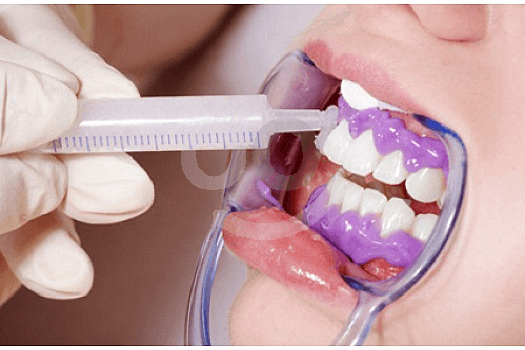
Contra-indications:
The contra-indications include tooth decay, periodontal disease, bad oral hygiene, allergies to the bleaching agents, tooth sensitivity, abrasion, erosion, attrition, pregnancy, kids under 16, gum recession and more.
Bruxism
Bruxism, or also known as teeth grinding, is a condition when people grind and clench their teeth and jaw. Usually, people are not aware of this condition, because they grind their teeth during the night. In the morning they wake up with headaches, earache, pain in the temporomandibular joint, pain in the muscles, teeth disorders and more. There are two types of bruxism, awake and sleep bruxism.
Causes:
The causes of bruxism can vary and include stress and anxiety, obstructive sleep apnea, drinking alcohol regularly, smoking and more. All of these factors are in some way associated with teeth grinding. When it comes to the awake bruxism, these patients usually clench and grind when they are under a lot of stress and pressure. That can happen at work, or during any other stressful period. Psychological factors are the ones that are very influential for this type of bruxism. Fear, anxiety, tension are all connected to awake clenching and grinding. The sleep bruxism is also connected to the same causes, but it’s not completely clear what exactly causes it in most cases. Other factors include age (often appears with young kids, but it goes away), aggressive people, genetics, certain medication (antidepressants, drug use, alcohol), mental diseases and more.
Symptoms:
The common symptoms of teeth grinding and clenching might not be obvious right away. A number of patients are not even aware that they are suffering from this condition. They are often affected by sleep, so when they wake up and notice symptoms they are not sure why they appear. The usual ones include grinding and clenching, that can be very loud. That is why the partners of patients often realize there is something going on. They either hear a loud noise or it wakes them up from sleep. Other symptoms include jaw and joint pain, a visible abrasion on the teeth surfaces, the posterior teeth are flat on the occlusal surfaces and also the frontal teeth are shorter. The teeth can suffer from chips and breaks. If the bruxism progresses, the enamel will wear out, and there will be exposed dentin. Some patients even reach that level where they suffer from an exposed pulp. Their teeth are extremely sensitive, especially to cold and hot drinks and water. Sometimes they can’t completely open the mouth because they feel severe pain in the joint. These patients have larger masticatory muscles that can affect their appearance. Headaches can appear very often.

Treatment:
If the bruxism is mild, sometimes it does not require treatment. But with severe cases, with many symptoms treatment is necessary. The treatment includes wearing mouth guards during the night or mouth splints. They will prevent great pressure on the temporomandibular joint and teeth wear. Sometimes this needs to be combined with muscle-relaxing therapies. The best way to start the treatment is to determine the cause. If that factor is eliminated, the patient will most likely stop grinding and clenching. When the bruxism appears in an early age, the chances are it will soon disappear. The best way to know is to visit a dentist and get a professional consult.
CAD/CAM
Special computer software in dentistry used for designing and creating dental crowns, dental bridges, dentures, inlays, onlays, veneers and more. It is a very fast, precise and convenient way to get dental restorations, but it can cost much more than the conventional way.
History:
The CAD/CAM system is also known as computer-aided design/computer-aided manufacturing system and a very advanced method in dentistry. It first became popular in the 1980s and went through a lot of changes in the following years. It first started with 2D imaging, but now offers precise 3D digital images. Also, the latest advancements include a special camera that doesn’t require any powder and scans the whole mouth with immense precision.
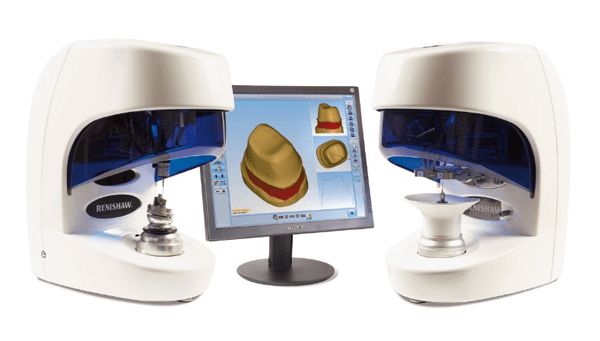
Uses:
The uses of the CAD/CAM system are very broad. The restorations can be literally used in so many different fields of dentistry. First of all, they are a revolution in prosthodontics, surgery, dental implantology, orthodontics, cosmetic dentistry, and more. The CAD/CAM is used to provide a number of restorations including, dental veneers, crowns, bridges, dentures, implants, orthodontic appliances and more.

Treatment:
The word computer-aided says it all. This means that the job of the dentist is much easier thanks to this method. It is also more pleasant for the patient. Once the patient and dentist have decided on the type of treatment, the dentist doesn’t have to take an impression and send it to the dental lab. He only takes pictures with a special camera that provides 3D images from the mouth. These digital impressions are sent to the special software. That way, with those images, both the dentist and the patient can plan the future restoration. The program gives numerous options and can perfectly match the future restoration to the already existing teeth. There is an array of colors and features to choose from. The biggest advantage of the CAD/CAM is extremely esthetic creations. It saves time both for the dentist and for the patient. Another thing that dentists really appreciate is that they can prepare the toot with the minimal removal of dental tissue. They get to use different materials with this method and even work with some of the newest and most advanced materials. The restorations are milled from the chosen materials most commonly in the form of blocks. Once it’s done, the dentist tries it in the patient’s mouth and discusses whether the patient wants to do any changes.
Pros:
As mentioned the biggest advantage of this method is the esthetic restorations. They are all done with a computer program based on very precise images. Another great thing is that they require only one visit to the dentist. The chairside CAD/CAM provides a final product in only hours. In other words, the patient gets a restoration with only one visit. They don’t have to go through any pain and the process is very simple and easy. In the end, the crowns, bridges, veneers fit perfectly and look exactly the same as the surrounding teeth.
Cons:
The only disadvantage is the price of the final product. These restorations can be several times more expensive compared to the conventional ones. That is why a lot of patents can’t afford them and decide for a cheaper alternative.
Canines
Canine teeth are also known as canines, cuspids, fangs and dog teeth. Each person has four canine teeth, two in the upper jaw and two in the lower jaw. The upper canines have the longest and strongest roots in the mouth. They are located in the corners of the mouth and their main function is grasping and tearing the food. The maxillary canines can be impacted very often during their eruption.
Anatomy:
People have exactly four canine teeth in their mouth. Two of them are located in the upper jaw and are maxillary canines. The other two are in the lower jaw and are mandibular canines. The canines are long teeth that end with one pointed tip. Different people have different looking dog teeth. The appearance can vary from person to person. In most cases, they are longer than the incisors, which don’t finish with a pointed tip. The first teeth located to the middle line are the incisors followed by canines. In other words, dog teeth are placed laterally next to each lateral incisor. When it comes to the appearance, these teeth are larger compared to the surrounding ones in the crown. The crown has a conical shape, and instead of an incisal edge, it finishes with a sharp tip. The lingual surface is hollowed, while the vestibular one is prominent. Mandibular canines are smaller compared to the maxillary.
Upper canines have the longest root in the whole mouth. Dog teeth have only one root in the majority of cases. The root canal number is also one, but in some cases, it can be two. Their roots form a slight protuberance in the vestibulum of the mouth, which is also very important for the mouth muscles. They are also important for the support of the muscles that keep the mouth in a youthful position. If the canines are missing, patients might appear as older and the corners of their mouth will start to move downwards. That is why missing teeth should be restored as soon as possible. Canines look very much like dog’s fangs so that is why they are commonly referred to as dog teeth.

Function:
Canine teeth are among the strongest teeth in the mouth. That is another reason why they are called dog teeth. They have the longest roots, that can withhold a lot of pressure. The main function of these teeth is to grasp and tear the food. Another very important function is their role of pronouncing letters and forming words. These teeth serve as guidelines for several movements of the jaw. There are two sets of canine teeth in the life. The first set is primary canines that are supposed to appear after the lateral incisors. The age might vary for different kids, but the first canine usually appears at around 15-16 months. By the second year, kids should have all the four canines. If the eruption is late, you should definitely visit a pediatric dentist. In most cases, there shouldn’t be a problem, but regular checkups are very important. The eruption of permanent dog teeth starts between the ages of eleven and twelve.
Cementum
The cementum is a part of the periodontium and it has fibers attached that help to connect the tooth to the alveolar bone. The cementum can be cellular and acellular.
This is a substance that covers the surface of dental roots. It is a part of the periodontal union and it provides a connection between every tooth and the surrounding alveolar bone. It is one of the main tooth substances aside from enamel, dentin, and dental pulp. It is also a very significant one. During life, as a person goes through aging stages, there are deposits of cementum mostly located on the tip of the tooth.
Composition:
Cementum is a hard tissue. It is still a softer one compared to enamel and dentin. It is composed of minerals and an organic part. It covers the root of the tooth and also the dentin in the root. Cementum is made of 45% to 50% inorganic substances and 50% to 55% organic. The main inorganic substance is hydroxyapatite, that is also a part of the dentin and enamel. When it comes to the junction between cementum and enamel, there are three types of relationship. The first one is that there is a gap between the two substances. That happens in 5% to 10% of the teeth. In most cases, the cementum overlaps the enamel. And in 30% of the cases, they simply touch, without an overlap.
Types:
There are two types of cementum: cellular and acellular. As the name suggests, the first type involves cells in its structure, while the second one doesn’t. The two types of cells that are a part of the cementum are called cementoblasts and cementocytes. The first ones create new cementum. They produce this substance in layers and create a specific look. After they are finished with their main function, cementoblasts transform into cementocytes. They are located in small spaces called lacuna. They are connected with the surrounding tissue with small canals. Cementum doesn’t contain any nerves, but it is a vascularized tissue. The cellular cementum is more present in the apical part of the root, while the acellular is located near the crown.

Functions:
The main function of the cementum is to connect the tooth to the alveolar bone. It is done through the periodontal ligament that is actually a complex union. It includes numerous flexible fibers that connect to different parts of the root. The endings of those fibers that are a part of the cementum are called Sharpey fibers. They attach the tooth to the alveolar bone and also allow its movements. Teeth don’t stay still in the socket. They have minimal movements that are controlled by the periodontal ligament. Roots move, turn are intruded and extruded. These are extremely small movements, but they still exist.
Another important thing to know is that cementoblasts create cementum throughout the whole life. So with age teeth lose some of the substance, especially the enamel on the surface. Because of that, a tooth can become shorter. That is when cementoblasts create more cementum in the apical part of the root.
Cerec 3D
Cerec 3D procedure consists in taking a digital optical impression Sirona Inlab directly in the patient’s mouth, designing the restoration on the computer with a special software and fabricating the restoration chair side with a special milling called Inlab MCXL. Worldwide, more than 38,000 dentists operate with CEREC Cad Cam method and thus produce around 7 million cad cam crown restorations every year. Feldspar and glass ceramics in particular are ideal for restorations such as crowns, inlays, onlays and veneers. The comparably low flexural strength (zirconia 800-1300mpa) of 80 to 450 mpa makes adhesive fixation of the restorations necessary. Lithium disilicate brandnamed “emax” is a glass ceramic with the same characteristics as oxide ceramics. Cerec Crowns are exceptionally durable and translucent. Vita Suprinity, a glass ceramic reinforced with Zirconia is making its way into the market, with an even higher flexural strength than Emax cad materials. Since the beginning of 2015 we successfully use this material in our dental clinic.
CEREC or Chairside Economical Restoration of Esthetic Ceramics is currently a very popular method in dentistry for the creation of high-quality restorations. It is tightly connected to the CAD/CAM technique. This whole process is aided by a computer, which means that everything is extremely precise. It saves a lot of time for the dentist and for the dental technician. The patient gets a final restoration in only hours. This means that there is no need for multiple visits. Everything gets done in only one minute.
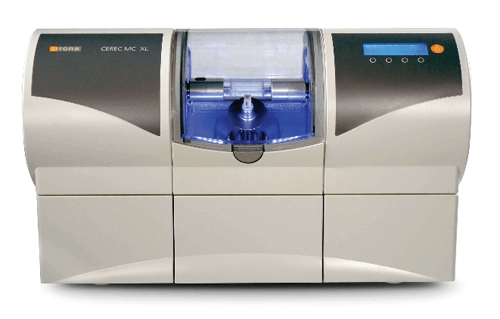
History:
The first ever used CEREC to create a restoration happened back in 1985. Two years later they released CEREC for an official use in dental laboratories and clinics. The system was created by Marco Brandestini and Werner H. Mörmann. Every year, the system gets a certain upgrade. Until 2003 it only used 2D images to plan the restorations. Since then, CEREC introduced 3D digital images that provide a very precise look of the mouth, teeth, and the surrounding tissues.
Uses:
The uses are very widespread and include all types of restorations such as crowns, bridges, veneers, frameworks, dental implants, dentures, onlays, inlays, telescopes, bars, surgical guides, attachments, orthodontic appliances and more. All of these restorations are very high-quality and with an advanced esthetic.
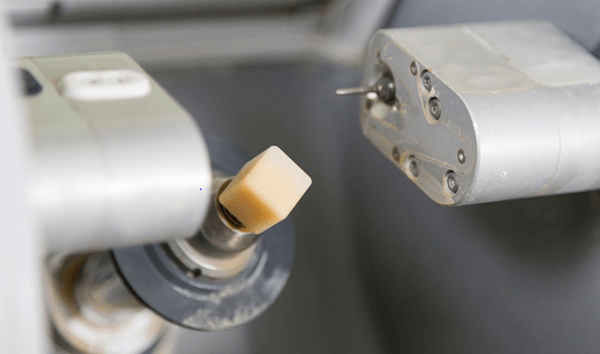
Treatment:
The treatment always starts with the dentist. First, he has to consult with the patient and decide on what kind of treatment and restoration they will be working on. The following step includes getting proper images with the new intraoral camera that doesn’t even require powder. Those precise images are sent to the software that shows them on the computer. This means that the dentist and dental technician get a complete view of the mouth. The next part includes planning the restoration. It has to perfectly match the surrounding teeth. Once it’s completely planned, the CEREC technology is connected to a milling unit, that uses different types of materials. The material is placed in the milling unit, and 15-20 minutes later the restoration is done.
Pros:
Very precise restorations, high-quality and great aesthetics. This method is very time-saving. Patients are very happy to leave the office with brand new teeth after only one visit. According to research, these restorations are more durable compared to the conventional ones.
Cons:
The high price.
Clear Orthodontic Aligners
Are an alternative and more cosmetic way to straighten your teeth compared to traditional braces. The whole treatment consists of a set of aligners that are removable and can be taken out of the mouth at any time, they are very easy to clean and are very comfortable to wear. The negative side is that they are more expensive than the traditional braces.
The clear orthodontic aligners are a new, advanced way to a perfect smile. A lot of people are not happy with wearing those conventional metal braces and are searching for an alternative to straight teeth. Well, with this method they avoid the metal or ceramic visible braces and get an almost invisible appliance to use.
Uses:
These appliances are a great solution for people that have mild spacing or crowding. They are not recommended for severe malocclusions. For those patients, dentists have to use fixed appliances. Once you’ve talked with your dentist, he’ll be able to let you know which is the best solution for you. They are not meant for severe crowding, for teeth that require complex movements, underbites, overbites, crossbites and more.

Treatment:
The treatment involves aligners that are made from a transparent material, for each patient separately. In other words, they are custom made for the specific case. The patient gets several trays with sets of aligners. The treatment starts with the first one. Before the whole procedure, the doctor will specifically explain to the patient how to use these appliances. They will have to wear the clear aligner for at least 20 hours per day. One aligner will last for 2 weeks in most cases. Once that period is over, the patient will have to switch to the next aligner in the set. The length of the treatment can vary for different cases. In most cases, it can be done for a year and a half. During this period, patients are advised to take off the appliances only when they need to eat. Proper and strict oral hygiene is necessary. They have to brush both their teeth and keep the aligners very clean. There is no pain during the treatment and almost no discomfort. People usually get used to the clear aligners very easily. After some time, they won’t even notice they’re wearing them. After the use of aligners, patients will probably have to wear retainers.
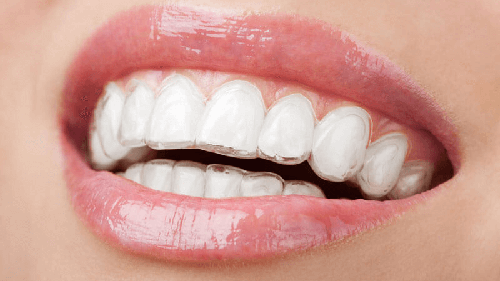
Pros:
The best thing is the aesthetic moment. Unlike the ceramic or metal braces, people won’t even know that you’re wearing an orthodontic appliance. They are very easy to get used to plus are comfortable. You can take them off and put them on at any time of the day. You will be advised to wear them throughout the whole day and remove them only for meals and when you’re brushing or flossing. It is much easier to provide great oral hygiene with the clear aligners compared to other fixed appliances.
Cons:
The biggest disadvantage of this type of treatment is the cost. The clear orthodontic aligners are more expensive than the other appliances. Another thing is that their use is limited. Dentists can’t use them in all cases, but only on the mild ones.




